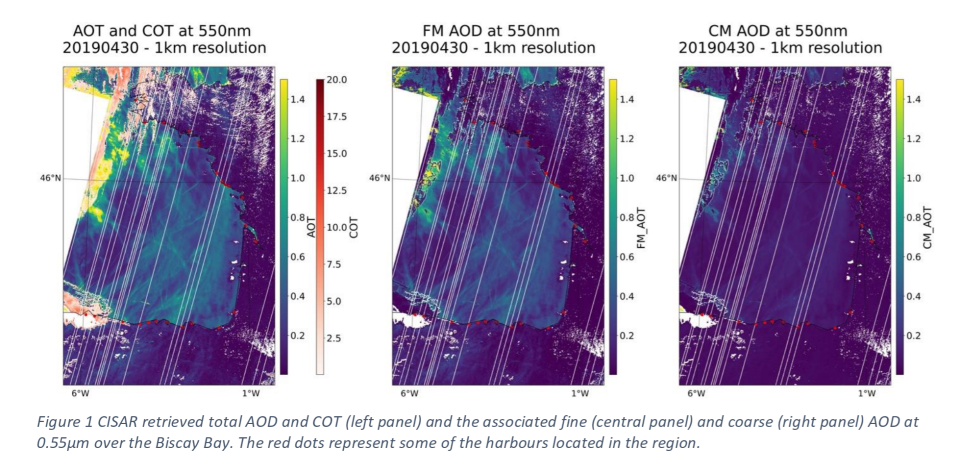Publié le 14 décembre 2021
The increased presence of the fine particles translates into the generation of Cloud Condensation Nuceleii (CCN) which produce more smaller cloud droplet and affect the cloud albedo. This effect known as the first indirect effect, increases the cloud albedo, resulting ultimately into a cooling affect. The area of the Bay of Biscay, being subject to heavy maritime traffic, has been studied in this regard using satellite data and model simulations.
In the framework of the ESA funded SPAR@MEP project, PROBA-V acquisitions over this region durning 2019 at 1 km resolution have been processed with CISAR, an innovatiove algorithm for the consistent retrieval of surface reflectance, aerosol, and cloud single scattering properties.
4 April 2019 was a particularly clear day and the trails left by the ships in the Bay of Biscay are clearly visible from satellite images. CISAR retrieves the AOT and correctly identifies the high aerosol load as fine particles, as can be seen in the image below.

This interesting case study demonstrates the capability of the CISAR algorithm to correctly differentiate between fine and coarse mode. Also, processing both aerosols and clouds, the CISAR algorithm could represent a powerful tool to study aerosol-cloud interactions, such as the Twomey effect, using high resolution satellite imagery.